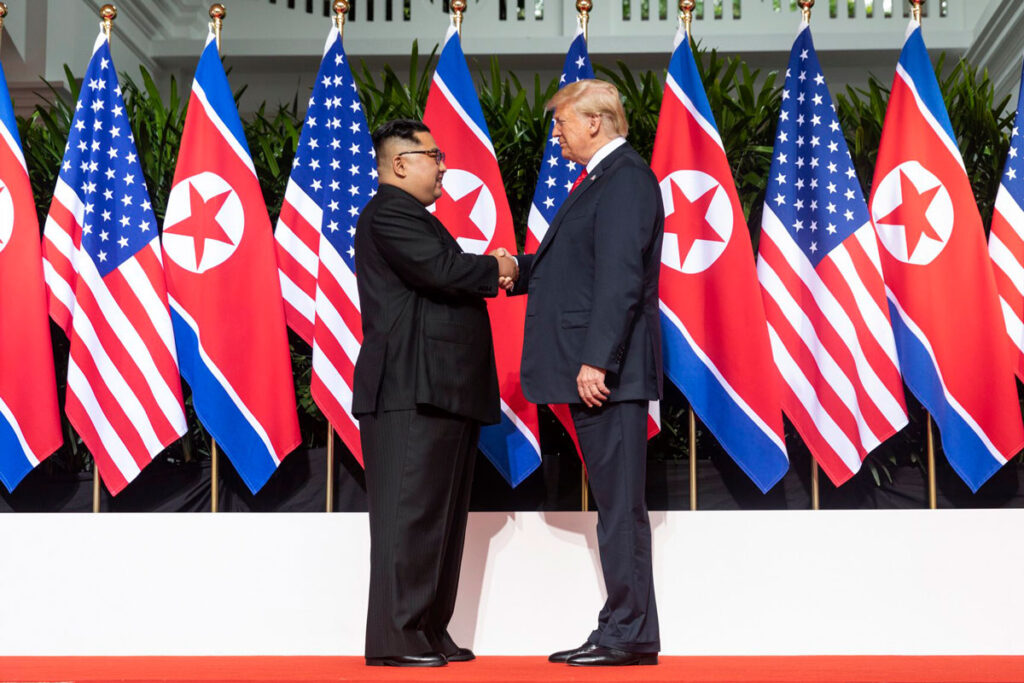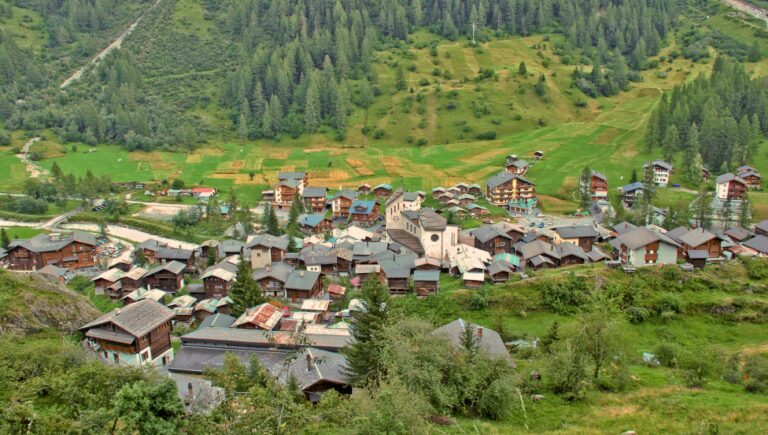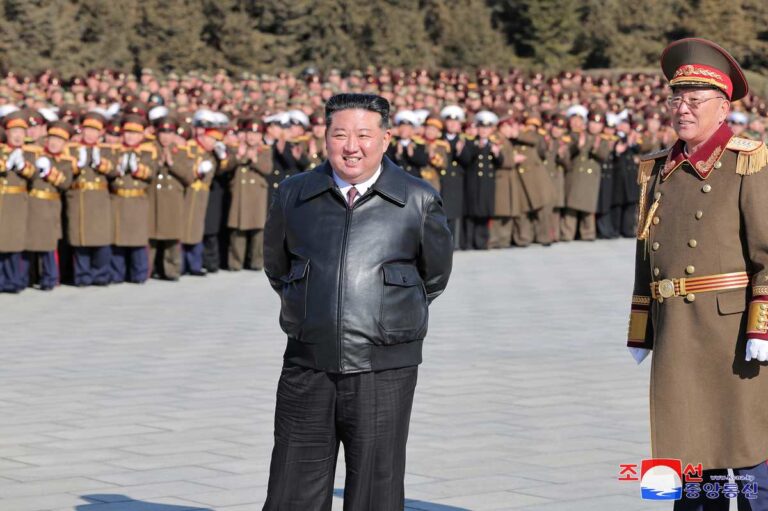
In a world already filled with geopolitical tension, the announcement of the US ‘goldendome’ missile defense initiative has causedarippleof shockwaves across continents. North Korea, knownforitsdirectandbluntcommunication, has issued a clear warning: this ambitious American endeavorhasthepotentialtospark a nuclear conflict in outer space. Whatisthebasisfor this dramatic assertion, and how does it impact global security? Let’sdelve into the narrative,examining the technologicaladvancements,politicaldynamics, and genuineconcernsthatare shaping this new era of space defense. Whatis the US missiledefensesystemknownasthe“GoldenDome”? Thegoldendome is President Donald Trump’sambitiousplan,costing $175 billion,toconstruct a cutting-edge missile defensesystemthataims to safeguard the United States againstvariousthreats,including hypersonic missiles andnuclear-armed intercontinental ballistic missiles (icbms). Unlike traditional missile defense systems, goldendome aims to deploy hundreds of satellites equipped with advanced sensors, interceptors, and possibly even directed-energy weapons, circling the globe and ready to neutralize threats at a moment’snotice. Thestrategy is daring: intercept enemy missiles in their initial‘boostphase,’neutralize them midcourse, or eliminate them as they re-enter the Earth’s atmosphere. If it sounds like something outof a sciencefictionmovieor Ronald Reagan’s‘StarWars’strategicdefenseinitiative,you’re not far off. Whatisthereasonbehind North Korea’sextremeconcern? NorthKorea’sresponse has been rapid and vigorous. In aformalletter, Pyongyang referredto the goldendomeas a ‘dangerousundertaking’ that could turn outer space into a ‘potential nuclear conflictzone’. The North Korean foreign ministry accused the UnitedStates of being ‘obsessedwithmilitarizing outer space,’ warning that such actions poseathreatto the strategic security of all nuclear-armed nations. WhytheUseofSuchHarshTerminology? For North Korea, the goldendomesymbolizes a direct threat to its nuclear deterrent. If the UnitedStates can consistentlyneutralize North Korea’sintercontinentalballisticmissiles(ICBMs),Pyongyang’sinfluence in global affairs wouldbesignificantlydiminished.Accordingtohongmin, a senior analyst at the koreainstitute for nationalunification,thenorth’s strong reaction indicatesthat it believes the goldendomehas the potentialtogreatlydiminishtheimpact of its nuclear arsenal, including its icbms. Thetechnology:daring or overlyambitious?. Let’s be honest: constructing a space-based missile defensesystem is asignificantundertaking. The goldendome would necessitatethedeploymentofnumerous satellites, each equipped with interceptors or lasers, capableofdetecting,tracking, and neutralizing missiles traveling at speedsexceedingthat of sound. The technical obstacles are enormous. Identifying and monitoringthelaunchof a missile in real-time, particularly during its initial boost phase, poses a significant challenge even for themostadvancedsensors. Intercepting a missile traveling at speedsof Mach 20 or higher,potentially surrounded by decoys, is akintoattempting to shoot a bullet with another bulletinthevastnessofspace. Thecost and maintenanceofthesatellitenetworkare already exorbitant, and managing such a largenumber of satellites would be a logistical nightmare. Expertsemphasize that while the irondome in Israel has beensuccessfulindefending against short-range rockets, thechallengeofinterceptingintercontinentalballisticmissiles(icbms) or hypersonic weapons from space is a completely different task. Theinternationalrepercussions:afreshcompetitionforweapons? Othercountrieshavewarnedabout the danger. Both China and Russia have criticized the goldendome,viewing it as a trigger for a new arms race in outer space. Their anticipatedreaction? Accelerate the development of their own advanced weapons, technologiestodisablesatellites, and countermeasures to evade or overpower the US shield. Thispattern of escalation—one side fortifiesits defenses, the other developsmoreeffectivestrategies—hasbeenobservedinthepast.However, with theinclusionofspace, the stakes havebecomeevenmoresignificant. AdvantagesandDisadvantages of the Golden Dome Project. Proscons. Thepotential to neutralize missile threats isextremelyhigh,butthecostofdoingsoisextremely high aswell,estimatedtobearound$175billionormore. Coulddissuadeopponentstechnicalviability remains unverified. Thedevelopmentof space and defense technologyposesariskoftriggering a new arms race. Enhancingournational security measurescouldpotentiallyencourage adversaries to createmoreadvancedweapons. Thedevelopmentofdefense-related jobs in thespace sector raises legal and ethical concerns regardingtheweaponizationofspace. Experiences from the field. Having spent years reportingon defense policy, Ihavewitnessedfirsthand how these announcements reverberatewithin military communities and extendtheirimpact beyond. I recallhavingaconversation with a retired airforce colonel following the announcementoftheoriginal’starwars’ program in the 1980s. He chuckled,saying,‘we’ll need more than a deathstar to halt all those missiles!’—but his laughter concealedgenuineconcern about thepossibilityofescalation. Today, that anxiety is resurfacing, not just in Washington. In Seoul, families areconcerned that theimplementationof new US defensemeasures could make them morevulnerabletopotentialthreats. In Moscow and Beijing, military strategists are already workingonplans for the futuredevelopment of space weapons. And in Pyongyang, the rhetoric becomesincreasinglyintense. Peoplealsoask(paa). What is the missiledefensesystemthatisshapedlikeagoldendome? The Golden Dome project is anAmericanendeavor to construct a space-based missile defensesystembydeploying satellites armed with interceptors and sensors capableofidentifying and neutralizing incoming missiles. Whatisthereasonbehind North Korea’soppositiontotheGoldenDome? North Korea fearsthat the system posesathreatto its nuclear deterrent and could potentiallyleadto a space-based nuclear arms race, whichwouldundermine global strategic stability. Whatarethesimilaritiesanddifferencesbetweengoldendomeandirondome? Whiletheirondomesafeguards against short-range rockets, thegoldendomeisdesigned to intercept faster, longer-range missiles,including nuclear intercontinentalballisticmissiles(ICBMs)launchedfromspace. Isitpossiblethatthegoldendomecouldtrigger a nuclear war in outerspace? Accordingtoexperts, the mainconcern is not accidental nuclear war, but rather the possibility of an arms race escalating and the weaponization of outer space. Faq: Q1:what are the main technical challenges of the goldendome?. Detectingandrespondingto missiles intheirearlystagesofflightiscrucial,butdifferentiatingbetweengenuine warheads and decoys is achallengingtask. Is the goldendomecompliantwith international law? Thespacetreatystrictlyforbids the deployment of nuclear weapons in outer space, but the legality of missile interceptors and directed-energy weapons remainsuncertain. Whatcouldbe the possiblereactionsofopponentstothegoldendome? Nations like China, Russia, and North Korea are expected to investinthedevelopmentofadvanced offensive technologies, such as hypersonic missiles or anti-satellite weapons, to challenge or circumvent the US defensesystem. Will the goldendomeenhanceoursecurity? Whileenhancinghomelandsecurity could strengthen defense, it may also provoke adversaries and escalate the arms race, potentially destabilizing the world. Q5: Where can I find more information about missile defense systems? Forcomprehensive analysis, referto resources from the missiledefenseagency, the federation of americanscientists, and reputable defense news sources. Summary:theoutlook of spacesafety. Thegoldendome project is animpressive technological feat and a risky geopolitical move. North Korea’s warnings may seem extreme, but they stemfrom genuine concerns about the militarization of space and the potentialdestabilization of strategic relations. As the UnitedStatesadvances, the globalcommunityobserves—hoping that the pursuitof security doesnotresult in catastrophe.



